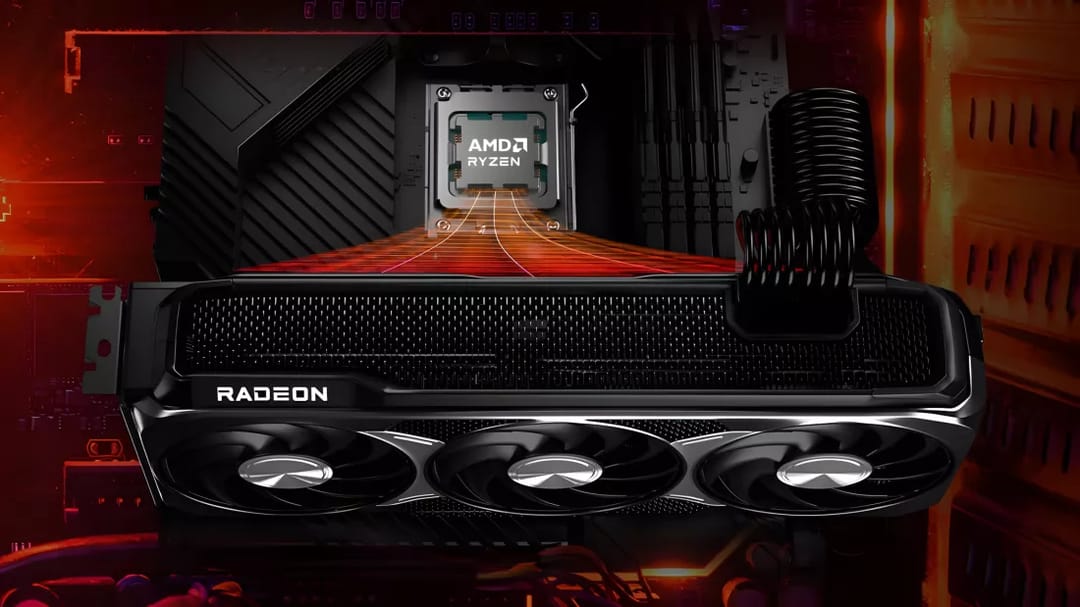UDNA (RDNA 5) Architecture Delivers a Generational Leap
AMD’s unified‐DNA design merges gaming and compute expertise to create RDNA 5. Early roadmap leaks point to roughly 20 % higher raster performance over RDNA 4 while doubling ray-tracing throughput, addressing Radeon’s historic path-tracing deficit against GeForce.
Flagship Configuration: 96 Compute Units on a 384-bit Bus
RDNA 5’s top die reportedly mirrors the Radeon RX 7900 XTX layout with 96 CUs and a 384-bit memory interface. Performance targets center on Nvidia’s RTX 5080 class, giving AMD a genuine enthusiast option without chasing the ultra-premium “90-class” tier.
Performance Headroom vs. Radeon RX 9070 XT and RTX 5080
-
RX 9070 XT already outpaces RTX 5070 Ti in many games yet trails RTX 5080 in pure raster work.
-
A 50 % CU uplift (64 → 96) plus architectural gains positions the RDNA 5 flagship to trade blows with—or exceed—the RTX 5080 while offering substantially stronger ray tracing than any previous Radeon.
Mid-Range and Mainstream RDNA 5 GPUs
64 CU, 256-bit “Navi 5X Mid”
Designed to succeed today’s RX 9070 XT, this variant should slot into the upper-mid stack, pairing efficient CUs with a wider bus than current 256-bit cards.
32 CU, 128-bit “Navi 5X Low”
Aimed at the value segment, the smallest die retains 32 CUs yet benefits from RDNA 5’s IPC and RT improvements, giving entry-level gamers modern lighting techniques without premium price tags.
Ray Tracing and AI Acceleration Upgrades
RDNA 5’s dedicated ray accelerators promise a 2× gain over RDNA 4, finally narrowing the real-time lighting gap with Nvidia’s Ada and Blackwell GPUs. Benchmarks already show RX 9070 XT edging the 7900 XTX in RT despite fewer CUs; scaling that efficiency to 96 CUs could make the flagship a ray-tracing powerhouse for 4K path-traced titles.
Console Synergy Extends RDNA 5 Reach
Next-generation PlayStation and Xbox consoles are expected to adopt the same UDNA foundation with around 80 CUs, suggesting console silicon that rivals desktop RTX 5080 performance. Rumors of four-figure console pricing indicate a shift toward premium pre-built gaming systems rather than traditional budget consoles.
Market Positioning and Launch Timeline
AMD is reportedly scheduling mass production for Q2 2026, with retail availability in the second half of 2026. By skipping a direct RTX 5090 competitor and focusing on the “80-class” battleground, AMD can offer a compelling blend of price, performance, and advanced RT features to reclaim enthusiast mindshare.
Quick Answers
Q: How much faster will RDNA 5 be in rasterized gaming?
A: Leaked targets suggest roughly 20 % higher raster performance than RDNA 4 at identical CU counts.
Q: Will the RDNA 5 flagship finally match Nvidia in ray tracing?
A: Architectural changes aim to double RT performance, positioning the card to meet or exceed RTX 5080 ray-tracing results.
Q: When can gamers buy RDNA 5 GPUs?
A: Current projections indicate a late-2026 launch window following mass production in mid-2026.

